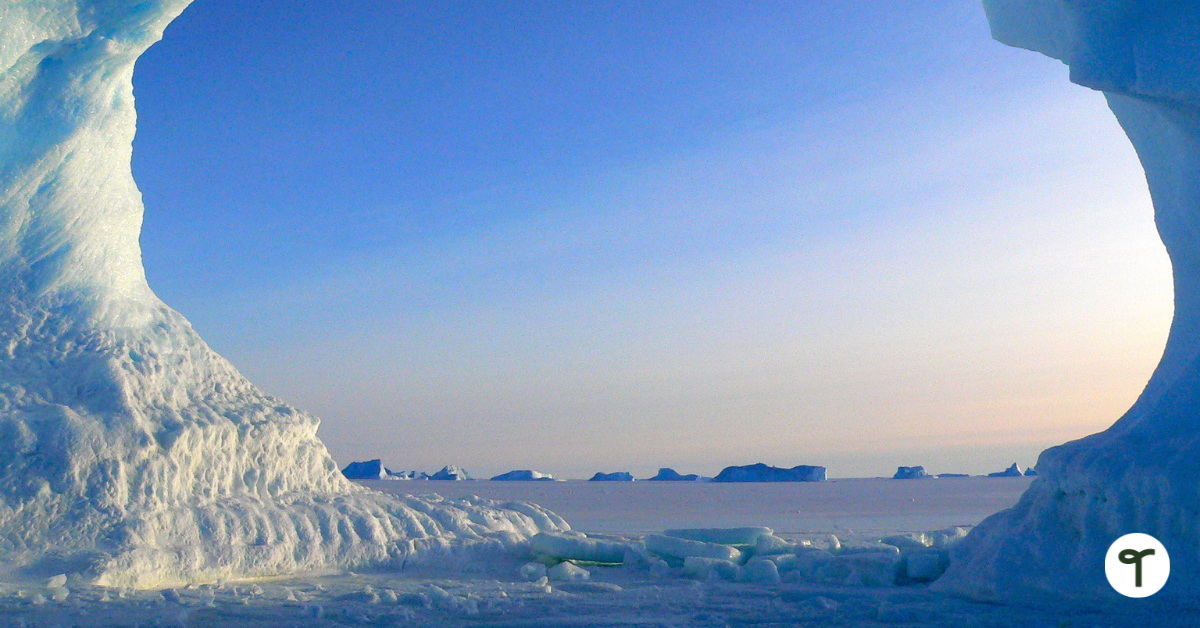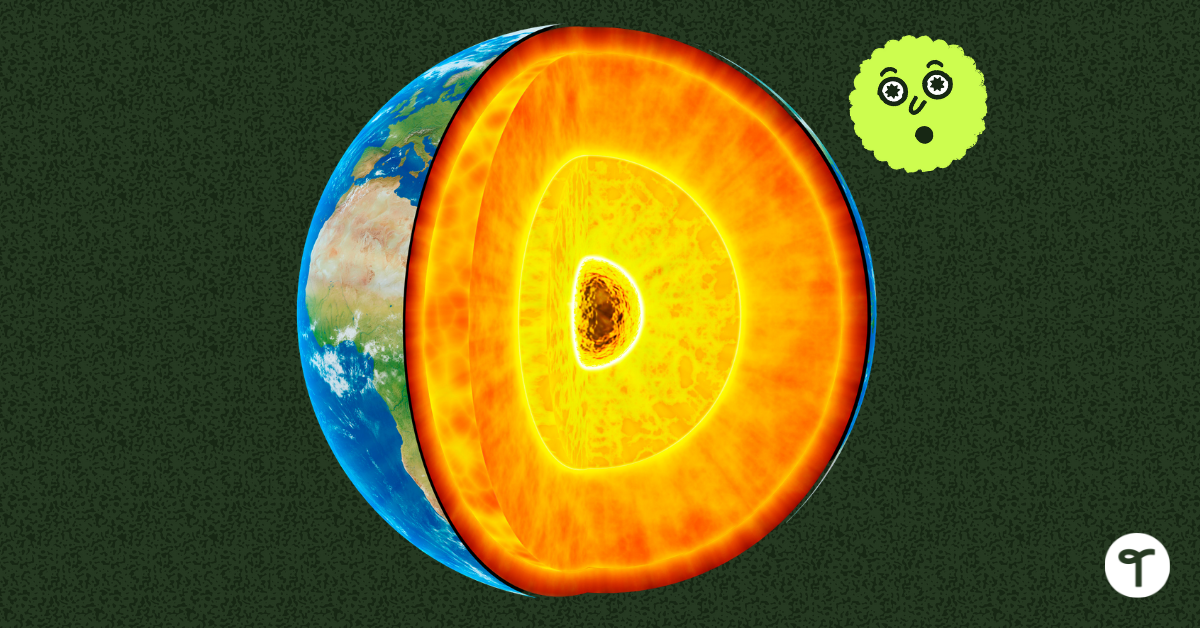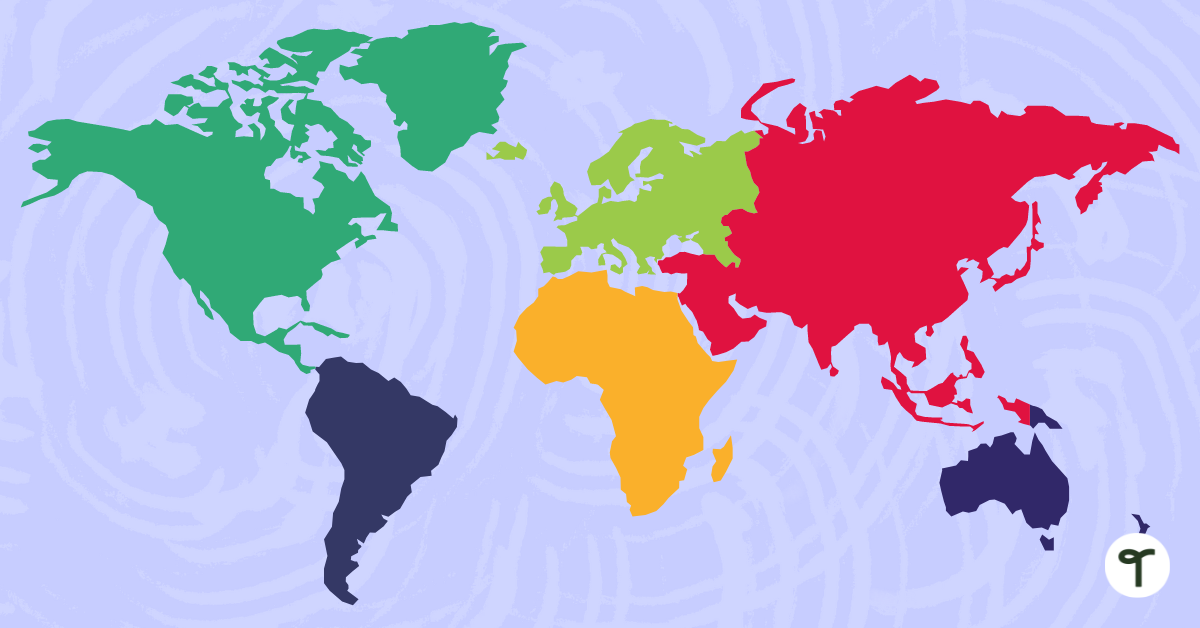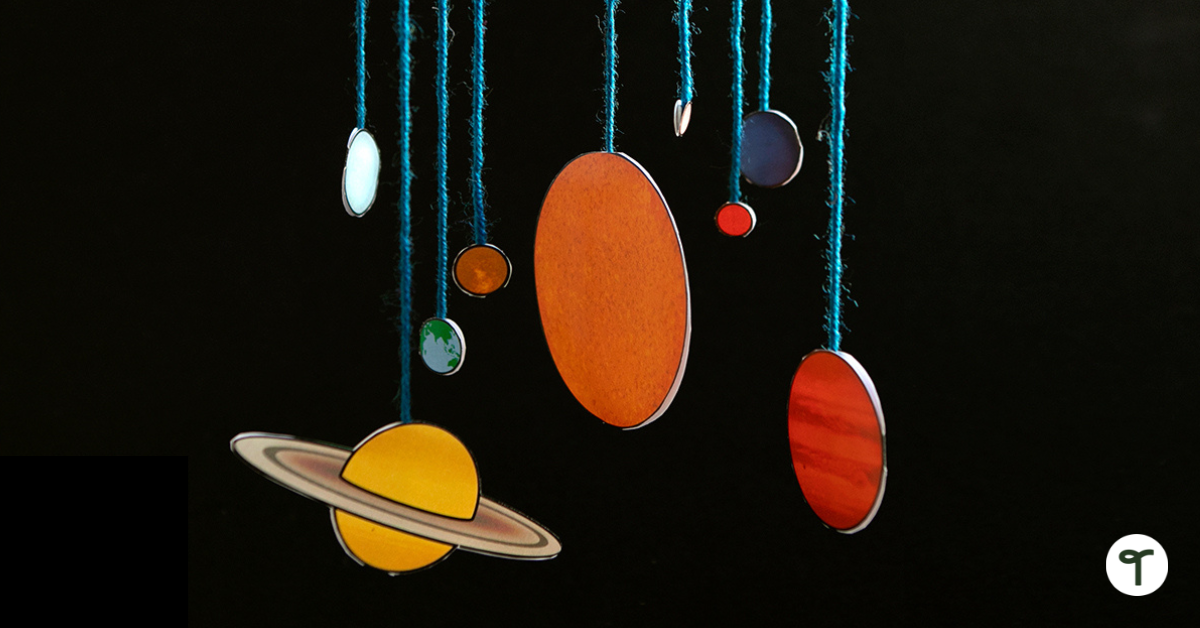Earth is the one place everyone on the planet calls home. Although April brings us Earth Day, you can share fun facts about Earth any time of year with students of all ages to get them excited about the planet we all call home.
The teacher team at Teach Starter has compiled a list of fascinating Earth facts to pack into your science lesson plans, for Earth Day or even to use as a fun daily fact on the whiteboard each morning. We’ve packed in a series of fun length and distance facts about Earth that can easily be turned into word problems in maths class, plus a tonne of trivia. Read on for a collection of ‘fun facts’ plus a few of our teacher team’s favourite ways to sneak these into lesson planning.
Fun Facts About Earth for Kids
1. The Earth’s longest mountain range is underwater! It is 80 500 kilometres long and is called the Atlantic Mid-Ocean Ridge System
2. Earth may be the fifth largest planet in our solar system, but it’s the largest terrestrial planet. Terrestrial planets are planets that are made up of rocks or metals with a hard surface.
3. The Earth’s diameter (the distance through the middle) is 12 800 km. That’s about the length of 88 608 rugby fields.
4. The Earth travels around the sun at 107 826 kilometres per hour! Comparatively, the average speed of a racecar is 322 km per hour. Our Earth is moving FAST!
5. It takes the Earth 365 days to complete one entire orbit around the sun. We call this orbit a year.
6. The Earth is tilted 23.4 degrees on its ‘axis’ which is an imaginary straight line through the middle of the planet.
Want to dive right into earth resources and activities? Browse our Earth and Space printables.
7. The Earth is not only tilted on its axis, but it also spins. We have daytime and nighttime because of its rotation.
8. The Earth spins on its axis at 1607 kilometres per hour. That’s one-and-three-tenths times as fast as the speed of sound.
9. The tilt of the Earth is what creates the four seasons — spring, summer, autumn and winter.
10. Earth looks like a ball shape or sphere, but it actually isn’t perfectly round. Our home planet bulges slightly around the equator.

11. The honey mushroom (Armillia bulbosa) fungus in the United States is the largest and oldest living organism in the world. It spans 9 square kilometres. That’s about a 10th of the size of the entire Disney World theme park in Florida.
12. The word Earth is at least 1,000 years old. It originates from Old English and German words meaning ground.
13. The North Pole is located in the middle of the Arctic Ocean on drifting ice. That means it’s difficult for scientists to study, and it also means it moves.
14. Earth is the only planet in our solar system that is known to support life. Its distance from the sun means it’s not too hot or cold for living things to survive.
15. There are thousands of man-made satellites in space, but Earth has just one natural satellite — the moon.
16. Research suggests that the Earth is about 4.5 billion years old. Scientists at the National Center for Science Education estimated this approximate age by dating rocks and meteorites.
Freebie Alert: Download a set of Labelling the Continents and Oceans worksheets to supplement your Earth studies.
17. Seventy-one per cent of the surface of the Earth is covered by water. That means only 29 per cent is land.
18. Only 3 per cent of the Earth’s water is fresh! The rest — 97 per cent — is salt water.
19. The Greek name for Earth was Gaia. It means ‘Mother Earth.’
20. The Earth’s atmosphere is mostly made up of oxygen and nitrogen. This allows us to breathe.

21. The Earth’s largest living structures are coral reefs. They contain thousands of species per unit including clownfish, anemones, sea urchins and sea turtles.
22. The lowest point on Earth is the Dead Sea located between Jordan and Israel. It’s 427 meters below sea level.
23. Approximately 6000 lightning strikes happen on Earth every minute!
24. The first Earth Day was celebrated in 1970.
25. We have so much water on the Earth’s surface that it’s often called the ‘blue planet’ or the ‘ocean planet.’
26. The Earth is made up of three layers, the core (the centre), mantle and crust (the top layer).
27. The Earth’s core is as hot as the Sun’s surface and is made of iron. It’s 6920 kilometres across!
28. The mantle, or middle layer of the Earth that surrounds the core, is 2896 kilometres thick. That’s about half as long as the Amazon River.
29. The outer layer of the Earth is the crust (where we live) and is 30.5 kilometres thick.
30. Earth is home to 8.7 million different species of plants and animals!

31. About 90 per cent of the Earth’s freshwater is locked in the polar ice sheets of Antarctica.
32. The Stromboli Volcano in Italy is the most active in the world. It’s been erupting non-stop for more than 2000 years!
33. The moon’s gravitational pull is what creates high and low tides in the oceans down here on Earth.
34. Both the Earth and the moon experience earthquakes. The moon’s aren’t as powerful as those down here on our home planet, but they’re caused by the tidal connection with the Earth.
35. Earth’s moon is about 38 4633 kilometres away. The first humans landed on the moon in 1969. Their names were Neil Armstrong, Buzz Aldrin, and Michael Collins.
36. Humans on Earth are 149.6 million kilometres away from the sun which means it takes 8 minutes and 19 seconds for sunlight to reach us.
37. Geology means the study of Earth’s physical structure and substances. Geologists (people who study geology) study the physical history of the Earth including rocks and volcanoes.
38. Earth is part of the Milky Way galaxy containing more than 200 billion stars!
39. For 2000 years, humans believed that the Earth was the centre of the universe. Today, we know that the sun is in the centre and the planets, including Earth, orbit around it.
40. About 250 million years ago, the continents were all connected in a massive land mass called Pangea.
Print a DIY solar system mobile now for easy Earth studies!
41. Earth is the only planet that is not named after a Greek or Roman god.
42. The theory of plate tectonics suggests that the Earth’s crust is made up of massive rock plates. When these plates move and shift, they can cause mountains to form. They also cause earthquakes.
43. The snowiest place in the world is Aomori City, Japan with an average of 792 cm of snow per year.
44. Asia is the largest continent on Earth stretching 11 000 km. That’s about nine-tenths as long as the diameter of Earth.
45. The Sahara is Earth’s hottest desert in Africa. The average temperature is 30 degrees Celsius, but during the hottest months, temperatures can exceed 122 degrees Fahrenheit. The hottest temperature recorded was 58 degrees Celsius!
46. Earth’s largest tree is located in Sequoia National Park in California in the United States. It’s 2000 years old, stands 83 m tall and is more than 11 m in diameter at the base.
47. The coldest place on Earth is Antarctica where temperatures can get as low as -73 degrees Celsius!
48. The deepest point on Earth is the underwater Mariana Trench in the western Pacific Ocean (322 km southwest of Guam). It’s 10 935 meters deep — that’s about 40 times the length of a tennis court.
49. Earth’s biggest rainforest is in South America’s Amazon. It’s 6.7 million square kilometres. That’s three times as big as the entire country of Monaco.
50. Out of the millions of species that live on Earth, only 14 per cent have been discovered and identified. Will you discover a new species when you grow up?
How to Use These Fun Facts in Your Classroom
Look for some fresh ideas to deploy these facts in your classroom? Here are a few quick ideas from our teacher team to get your mind buzzing!
- Trivia Game Time. Split your class into small groups for a review session, trivia-style. In addition to your core material, add a few fun Earth facts to keep kids on their toes!
- Research Activities. Present a list of some (or all!) of these fun facts to kick off an Earth research project. Students can choose one fact and research the science behind it — or the history — creating posters to show off what they’ve uncovered. This makes for a good group project option as well as an individual task.
- Prompt a Writing Task. Bring science facts into English with a writing prompt. Challenge students to write a paragraph that includes the fact. Small groups can also work together to create a short story inspired by the fact — will their character try to climb Earth’s largest tree? Venture to the volcano that won’t stop erupting? Take off for the moon? There’s a literal world of opportunity for inspiration.
Can’t get enough Earth facts? Explore our Earth and Space Sciences Collection for printable worksheets, games, project guides, and more!
Banner image via Shutterstock/Krotnakro








Comments